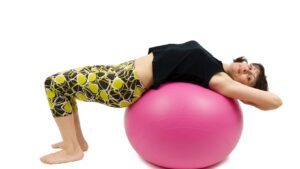Turning 40 marks a significant milestone, often accompanied by a shift in fitness goals and priorities. As the body ages, it requires a more mindful approach to health and wellness. This is where fitness hacks come into play, offering practical and effective strategies tailored for those in their 40s and beyond.
Whether it’s optimizing workouts or making smarter nutritional choices, these hacks empower those over 40 to embrace a healthier lifestyle. It’s never too late to start investing in one’s health, and these strategies provide the perfect roadmap for a fitter, more vibrant future.
Over 40 Fitness Hacks
 Staying agile after 40 involves targeted fitness hacks. Strength training becomes essential because it counters muscle loss and maintains metabolism. By lifting weights or using resistance bands twice a week, individuals enhance strength and mobility. Flexibility is crucial in minimizing injury risk, so integrating yoga or Pilates sessions helps in maintaining joint health.
Staying agile after 40 involves targeted fitness hacks. Strength training becomes essential because it counters muscle loss and maintains metabolism. By lifting weights or using resistance bands twice a week, individuals enhance strength and mobility. Flexibility is crucial in minimizing injury risk, so integrating yoga or Pilates sessions helps in maintaining joint health.
High-Intensity Interval Training (HIIT) offers efficient cardiovascular benefits. Short, intense bursts, followed by rest periods, maximize calorie burning and improve heart health. Prioritizing hydration supports energy levels and muscle recovery. Consuming 3 liters of water daily aids in optimal body function.
Balanced nutrition forms a core part of these fitness hacks. Incorporating a diet rich in fiber, lean proteins, and healthy fats supports metabolism and overall well-being. Sleeplessness impacts weight and energy, so ensuring 7-8 hours of quality rest revitalizes the body. By adopting these over 40 fitness strategies, individuals can sustain an active and healthy lifestyle.
Creating A Sustainable Fitness Plan
 Developing a sustainable fitness plan involves understanding personal goals which could range from weight management to enhanced mobility. Regularly adjusting these goals according to progress levels or lifestyle changes helps in maintaining motivation. Consistency plays a crucial role, ensuring activities align with daily routines to avoid overwhelming schedules.
Developing a sustainable fitness plan involves understanding personal goals which could range from weight management to enhanced mobility. Regularly adjusting these goals according to progress levels or lifestyle changes helps in maintaining motivation. Consistency plays a crucial role, ensuring activities align with daily routines to avoid overwhelming schedules.
Incorporating varied exercises, such as combining cardio with strength training, keeps the fitness plan engaging. Utilizing fitness apps or joining community groups can offer external support and accountability, enhancing adherence to the plan. Setting realistic milestones allows individuals to achieve gradual improvements without feeling pressured.
Rest and recovery should feature prominently in a sustainable fitness plan to prevent burnout. Balancing workouts with relaxation periods enables the body to rebuild and adapt. Consulting fitness professionals can aid in tailoring the fitness plan to specific needs or any physical limitations, ensuring exercises are both effective and sustainable. Adjustments based on feedback from physical experience create a more personalized and enduring fitness journey.
Tools And Resources For Fitness Success
 A range of tools and resources enhances fitness success for those over 40. Fitness apps offer guided workouts, tracking features, and reminders to maintain consistency. MyFitnessPal and Fitbit are popular choices for monitoring progress and setting achievable goals. Wearable technology tracks daily activity levels, heart rate, and sleep quality. Devices such as the Apple Watch and Garmin provide real-time data, helping individuals adjust their routines for optimal fitness success.
A range of tools and resources enhances fitness success for those over 40. Fitness apps offer guided workouts, tracking features, and reminders to maintain consistency. MyFitnessPal and Fitbit are popular choices for monitoring progress and setting achievable goals. Wearable technology tracks daily activity levels, heart rate, and sleep quality. Devices such as the Apple Watch and Garmin provide real-time data, helping individuals adjust their routines for optimal fitness success.
Online platforms like Peloton and Beachbody On Demand supply a variety of workouts and classes, catering to different fitness levels and preferences. These resources empower users by offering personalized programs and community support.
Strength equipment like resistance bands and dumbbells is crucial for at-home workouts. They accommodate versatile exercises aimed at enhancing strength and promoting mobility.
Common Misconceptions About Fitness Over 40
Many believe that fitness becomes less achievable after 40, but this is far from the truth. While the body does undergo changes, embracing the right strategies can lead to significant health benefits and improved energy levels. It’s crucial to dispel myths that suggest slowing down or avoiding certain exercises due to age. Instead, individuals should focus on adapting their routines to meet their evolving needs. By incorporating strength training, flexibility exercises, and cardiovascular activities, those over 40 can maintain a vibrant and active lifestyle. Investing in fitness is an investment in longevity and quality of life.

